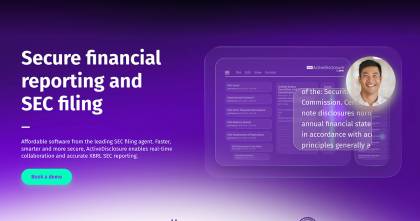The confidential IPO process was originally developed as an easier way for smaller companies to go public. Judging from some of the companies that have used this route to go public, the private method is just as likely to be used by a Silicon Valley giant as a smaller entity these days.
If you are in the early stages of planning to take a company public, you may be interested in some of the benefits that confidential IPO filings offer over other methods.
What Is a Confidential IPO?
Confidential IPOs date from 2012, when the JOBS Act of 2012 was passed, giving more support to small businesses.
In the private IPO filing, companies can file their S-1/F-1 under Form DRS with the SEC confidentially, avoiding public preview. While the information will eventually be made public in the lead-up to the IPO, the company gets to keep its sensitive information private for a period of several months, if not longer. The company may even decide not to pursue an IPO and so any filings made confidentially can be withdrawn privately without alerting the public.
Benefits of Choosing Confidential IPO Filings
A confidential IPO filing protects privacy. It allows the company greater flexibility and may even confer some advantages. Experts who favor this path to taking a company public generally say the benefits of the private approach include:
- Direct feedback from the SEC on a confidential S-1 filing without the added pressure of public scrutiny
- Greater flexibility to schedule their IPO based on SEC feedback, market timing or other factors
- Strategic advantages in a crowded marketplace
Confidential IPO Filing Requirements
A confidential IPO filing used to be reserved for companies with less than $1 billion in annual revenue. However, this ceiling was waived in 2017. Now, any company that wishes can use this confidential process to go public.
Confidential IPO Filing vs. Public IPO Filing
By now, you might be wondering how the confidential approach differs from the public IPO filing.
With a public IPO filing, companies provide the SEC with a registration statement under Form S-1 or F-1, which is immediately available to the public. The company will get commentary from the SEC on its submission, Likely creating the need for the company to publicly file an amendment to the registration statement This back and forth exchange of comments may continue through several rounds creating multiple public amendment filings. Public interest and scrutiny can accrue as the IPO moves forward. Any changes to the IPO launch date could unnecessarily create detrimental speculation that something is wrong with the company, its products, or financials.
With the confidential route, companies submit the S-1/F-1 under form DRS to the SEC privately, delaying public release of sensitive information until they get closer to IPO.. Companies have until 15 days before their IPO roadshow to make the information publicly available. If the company is not doing a roadshow, it has until 15 days before the planned registration date. The public will still have time to evaluate the IPO; however, there is less speculation due to the reduced time frame.
Both IPO options can work well, so a company will need to decide which one best meets its goals. Companies might consider the confidential route in a bear market, if volatility is high, or if they wish to avoid scrutiny from the media and public. For example, high-profile companies may choose the confidential route out of an abundance of caution, because they place a premium on privacy.
Regardless of which option you choose to take your company public, you will need SEC filing software to prepare and file all the necessary paperwork. DFIN has resources to help with the S- 1 filing and any other SEC filings. Discover how our signature software can streamline your reporting and filing needs.
